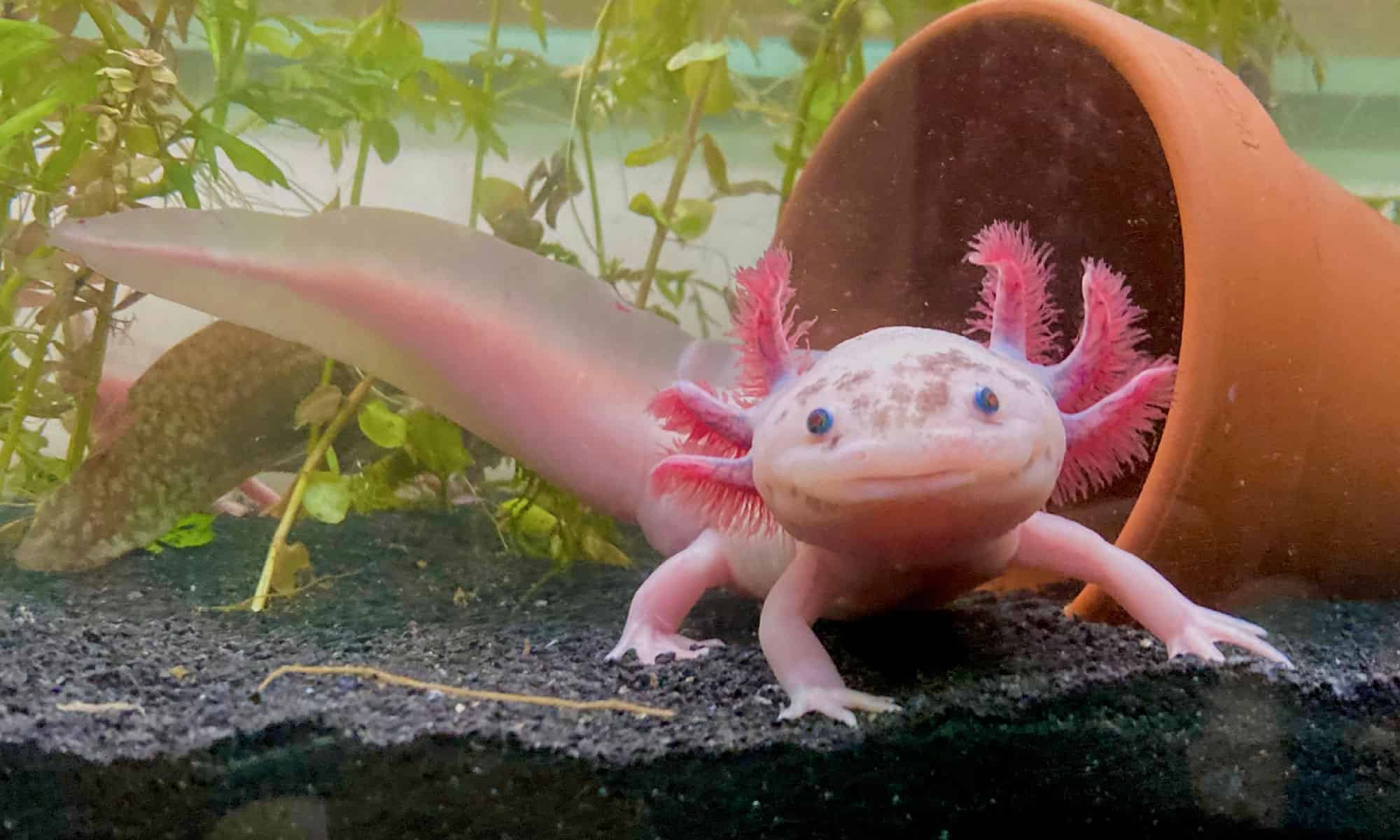A Deep Dive into the Axolotl: Biology, Challenges, and Conservation
Have you ever heard of an animal that can regrow its limbs? What about one that stays eternally young? Meet the axolotl – a creature so incredible it seems like something out of science fiction!
These “smiling salamanders” are truly captivating. They exhibit neoteny, meaning they retain their youthful, baby-like features throughout their lives. Imagine a salamander that never grows up, forever rocking its cute, external gills and tail fin – that’s the axolotl!
But here’s where things get really mind-blowing: axolotls are masters of regeneration. They can regrow lost limbs, parts of their spinal cord, and even portions of their heart or brain! Scientists are intensely studying this amazing ability, hoping to unlock the secrets of regeneration to benefit human health.
Sadly, these incredible creatures are facing a real danger – extinction. Their home, the ancient waterways of Xochimilco in Mexico City, is threatened by pollution, habitat destruction, and invasive species.
The ethics of keeping axolotls as pets is a subject of much debate. While they might seem like unique and low-maintenance companions, they actually require very specific care to thrive. It’s important to carefully consider the ethical implications of keeping an endangered species as a pet.
The story of the axolotl is more than just a tale of survival; it’s a reminder of the beauty, resilience, and fragility of the natural world. By understanding and supporting conservation efforts, we can help ensure that the axolotl’s smile never fades away.
Axolotl Benefits: Unlocking the Secrets of the “Mexican Walking Fish”
The axolotl, with its perpetual grin, isn’t just a pretty face. This “smiling salamander” holds a treasure trove of benefits for the world of medicine and science.
The Regeneration Powerhouse
Imagine regrowing a lost limb, just like a lizard regrowing its tail. Axolotls can do just that! They possess an extraordinary capacity for regeneration, going beyond limbs to include their spinal cords, heart tissue, and even parts of their brains. Scientists are captivated by this ability, meticulously studying it with the hope of unlocking the secrets of human regeneration. Imagine the possibilities for human medicine if we could harness this power!
Cancer-Resistant Wonders?
Beyond their regenerative prowess, axolotls exhibit a remarkable resistance to cancer. Scientists are diligently researching their genes and biological processes, hoping to shed light on cancer prevention and treatment in humans. Could the axolotl hold the key to combating this devastating disease?
Axolotls: The Future of Medicine?
Beyond regeneration and cancer research, axolotls possess immense potential in other medical fields. They are proving invaluable in studies on wound healing, organ transplantation, and understanding birth defects. Even their stem cells are under the microscope, holding promise for treating a wide range of diseases. The axolotl truly is a treasure trove of medical possibilities!
Protecting the “Smiling Salamander”
Despite their vast potential, axolotl populations in the wild are dwindling, pushing them towards extinction. Habitat loss and water pollution are the primary culprits. This is a serious concern, as axolotls are essential for scientific advancement and medical breakthroughs. It’s our responsibility to support conservation efforts to protect this extraordinary species. Let’s ensure that future generations experience the wonder of the axolotl firsthand, not just through pictures in books.
Key Takeaways:
- Axolotls are masters of regeneration, capable of regrowing various body parts.
- They show remarkable resistance to cancer, making them a crucial subject in cancer research.
- The axolotl holds vast potential for advancements in medicine.
- Conservation is critical to prevent the extinction of this unique species.
Axolotl Sejenis Apa? Unveiling the Secrets of the Mexican Walking Fish
So, you’re curious about axolotls? Let’s unravel the mystery of these fascinating creatures. While their feathery gills might make them resemble fish, axolotls are actually amphibians, more closely related to tiger salamanders than goldfish!
What truly sets them apart is their neoteny – they remain in their larval stage throughout their lives, retaining their gills and living exclusively underwater. Imagine a salamander that stays forever young, sporting its cute, feathery gills!
Their claim to fame? Their incredible regeneration abilities! We’re not just talking about a lost tail here, although they can definitely regrow that too. Axolotls can regenerate limbs, organs, even parts of their brains and spinal cords! It’s like something out of a comic book! Scientists are understandably fascinated and are studying this ability intensely, hoping to unlock the secrets of axolotl regeneration to help humans with injuries.
Axolotls aren’t just scientific marvels. They hold deep cultural significance, too. For centuries, the Aztecs revered them, linking them to the god Xolotl and seeing them as symbols of strength and resilience.
Sadly, the axolotl’s natural habitat in Mexico’s ancient lake systems is under serious threat from pollution and invasive species. This, coupled with their capture for the pet trade, has landed these incredible creatures on the endangered species list. Thankfully, conservation efforts are underway to protect the remaining wild populations and their fragile environment.
Axolotl: What Class of Animal Is It?
Now that you’ve met the axolotl, let’s dive deeper into their classification in the animal kingdom. While their unique appearance, complete with those mesmerizing, feathery gills, might have you thinking “fish,” the axolotl is classified as an amphibian. They belong to the same class as the frogs and toads we often encounter, but with a fascinating twist.
What makes axolotls truly special is their neoteny. In simple terms, neoteny is like being forever young. Axolotls retain larval characteristics, such as their gills and dorsal fin, even as they reach adulthood. These features are typically lost in other amphibians as they mature.
Imagine remaining as cute and adorable as a tadpole your entire life – that’s the axolotl!
But their uniqueness doesn’t stop there. These “smiling salamanders” are renowned for their extraordinary ability to regenerate. If an axolotl loses a limb, part of its spinal cord, or even a portion of its heart, there’s no need to worry! They can regrow it. This incredible ability has captivated scientists, making them a subject of intense research, especially for future applications in medicine.
Sadly, the axolotl is facing dire threats in the wild. Their numbers are dwindling due to the loss of their natural habitat, Lake Xochimilco in Mexico. Water pollution, environmental degradation, and the introduction of invasive fish species like tilapia and carp all threaten the axolotl’s survival.
It’s up to us to participate in axolotl conservation efforts, ensuring that future generations can continue to marvel at these unique creatures.
Have you ever wondered about the araneus ventricosus species? Click on the link to find out more about them. Be sure to also check out our big bounce boobs section for more information on this topic.
- Unveiling the Enigma: Mansoureh Khojasteh Bagherzadeh’s Public Appearances & Private Life in Iran - July 18, 2025
- Unveiling the Mystery: Mansoureh Khojasteh Bagherzadeh’s Husband: A Rare Glimpse into a Private Life - July 18, 2025
- Unveiling Masoud Khamenei’s Mother: Power, Influence, and Iran’s Future - July 18, 2025
















